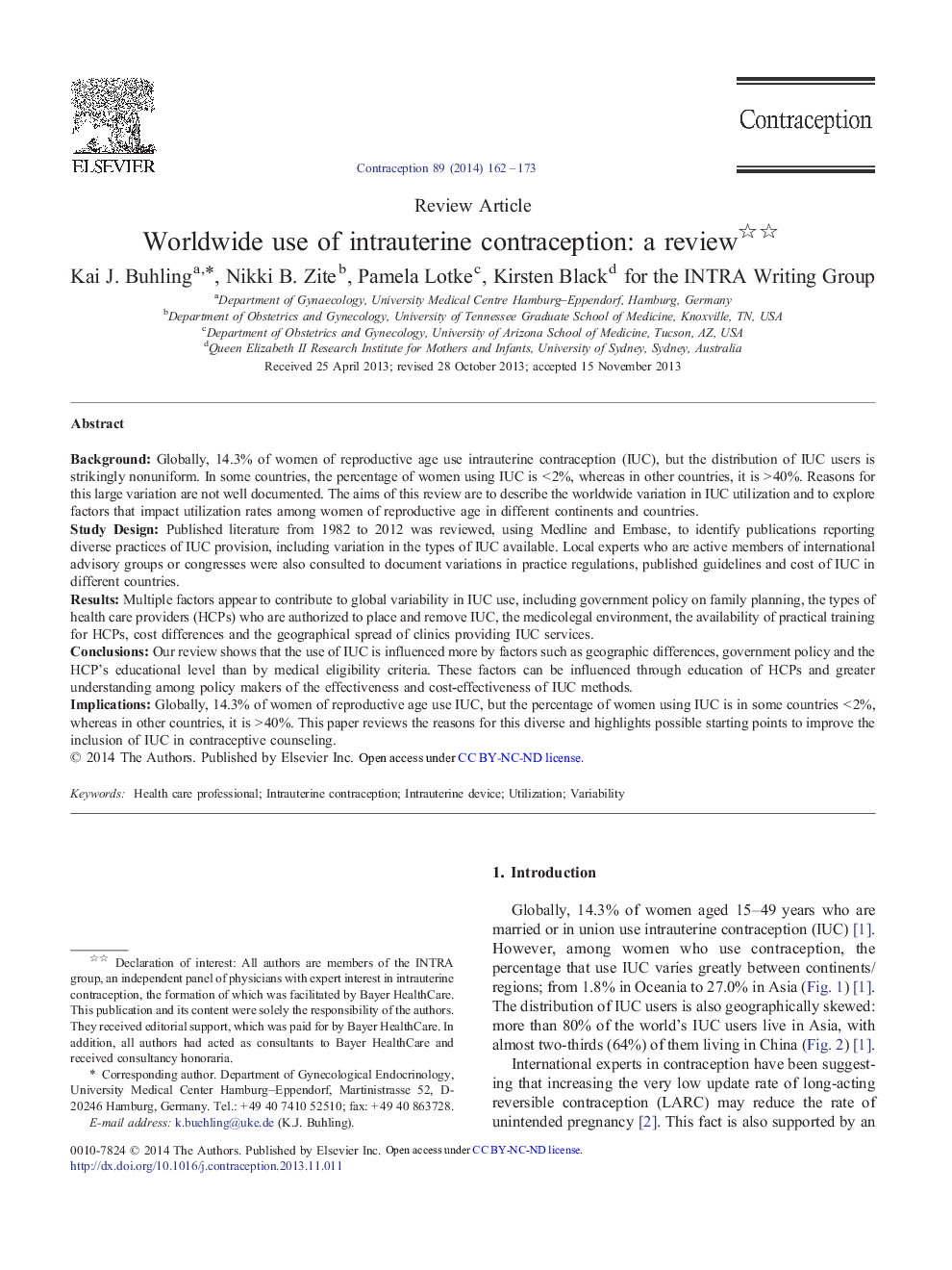| Article ID | Journal | Published Year | Pages | File Type |
|---|---|---|---|---|
| 6171578 | Contraception | 2014 | 12 Pages |
BackgroundGlobally, 14.3% of women of reproductive age use intrauterine contraception (IUC), but the distribution of IUC users is strikingly nonuniform. In some countries, the percentage of women using IUC is <Â 2%, whereas in other countries, it is >Â 40%. Reasons for this large variation are not well documented. The aims of this review are to describe the worldwide variation in IUC utilization and to explore factors that impact utilization rates among women of reproductive age in different continents and countries.Study DesignPublished literature from 1982 to 2012 was reviewed, using Medline and Embase, to identify publications reporting diverse practices of IUC provision, including variation in the types of IUC available. Local experts who are active members of international advisory groups or congresses were also consulted to document variations in practice regulations, published guidelines and cost of IUC in different countries.ResultsMultiple factors appear to contribute to global variability in IUC use, including government policy on family planning, the types of health care providers (HCPs) who are authorized to place and remove IUC, the medicolegal environment, the availability of practical training for HCPs, cost differences and the geographical spread of clinics providing IUC services.ConclusionsOur review shows that the use of IUC is influenced more by factors such as geographic differences, government policy and the HCP's educational level than by medical eligibility criteria. These factors can be influenced through education of HCPs and greater understanding among policy makers of the effectiveness and cost-effectiveness of IUC methods.ImplicationsGlobally, 14.3% of women of reproductive age use IUC, but the percentage of women using IUC is in some countries <Â 2%, whereas in other countries, it is >Â 40%. This paper reviews the reasons for this diverse and highlights possible starting points to improve the inclusion of IUC in contraceptive counseling.
